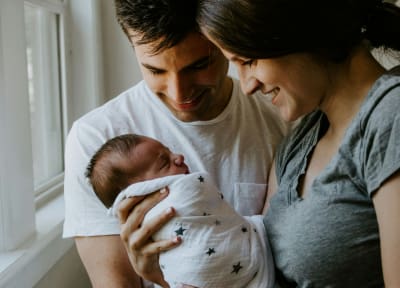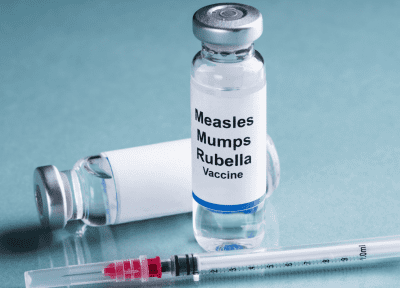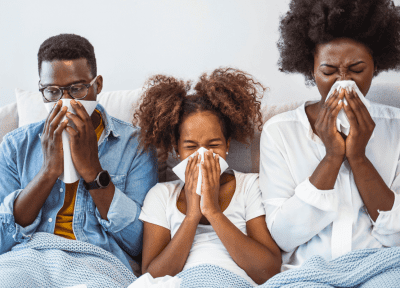Vaccine Testing & Approval
Explore how vaccines are tested for safety and efficacy, and feel confident you are making an informed choice about your family’s health.
On This Page:
Overview
Understanding the process of vaccine testing and approval can help alleviate any concerns you might have as you research options for your or your family’s health. Vaccines are thoroughly researched and tested for efficacy (their ability to provide immunity), and safety. The underlying basic research in laboratories is conducted for many years before possible vaccines are identified. Then the possible vaccines or vaccine candidates go through years of research in the laboratory and initial testing. Most vaccines are tested in tens of thousands of human volunteers before they can be considered for approval, which requires a rigorous review process by the Food and Drug Administration (FDA). Once approved by the FDA, vaccines will continue to be monitored for safety; if signs emerge that a vaccine imposes undue risks, the vaccine can be withdrawn from the market.
Key Points
- Years of research on a disease and the immune system inform possible vaccine candidates.
- Vaccine candidates go through years of research in pre-clinical studies before ever being studies in people.
- Clinical trials are rigorous. Vaccines are studied in tens of thousands of people and compared to a placebo to determine safety and efficacy.
- Research is reviewed by trusted organizations before vaccines are approved for people.
Vaccine Research
The earliest stage of vaccine development is laboratory research, often called basic research, with the goal of understanding the pathogen and the body’s immune response to the pathogen. Scientists use this foundational understanding to inform ideas for vaccines, including which antigen to choose. Decades of basic research may inform potential vaccines. This research can occur at universities, government agencies, and private companies.
Once researchers have an idea for a vaccine, they study its ability to cause an immune response in small animals, like mice, in what is called pre-clinical studies. Based on this research, scientists may make small changes to improve the vaccine candidate. If the vaccine shows promise, it moves forward to studies in animals that are more similar to people, like monkeys. If the vaccine research shows that a vaccine candidate has effectiveness at inducing an immune response and is safe in animals, it can move forward to clinical trials in people.
Clinical Trials
To begin clinical trials, researchers submit an application to the FDA including all their research up to that point. The FDA must approve the application for the resarcher to begin clinical trials. There are three phases of the clinical trial process, which all include a placebo group. A vaccine candidate must be successful in one phase to proceed to the next.
Phase I
Very small groups of volunteers, 20-100, receive the vaccine candidate. During Phase I researchers are looking to see if the vaccine is safe in people, including identifying possible side effects, and determining if the vaccine candidate triggers an immune response. If the vaccine is intended for children, researchers start with adults and slowly include younger volunteers until they reach the target age.
Phase II
The vaccine candidate is now tested in 100-300 volunteers who have the characteristics of those the vaccine is intended for. In Phase II researchers focus on how well the vaccine works, including the best dose and timing of doses, while continuing to monitor for safety.
Phase III
The vaccine candidate is now given to thousands of volunteers. In Phase III, researchers confirm how well the vaccine works against the target pathogen and continue to monitor safety. Clinical studies of this size help identify rare side effects, if there are any.
Vaccine Approval
After all of this research, scientists apply for FDA approval. The FDA checks the clinical trial data to ensure the vaccine is safe and effective. They also visit manufacturing sites where the vaccine will be made to ensure they are clean and safe. The FDA considers both the benefits and risks for those who will receive the vaccine compared to getting the disease. If the FDA approves the vaccine, it is now licensed to be administered in the US. The FDA continues to monitor the safety of the vaccine even after approval.
Sources
- Jain, A., Marshall, J., Buikema, A., Bancroft, T., Kelly, J. P., & Newschaffer, C. J. (2015). Autism Occurrence by MMR Vaccine Status Among US Children With Older Siblings With and Without Autism. JAMA, 313(15), 1534. https://doi.org/10.1001/jama.2015.3077
- Taylor, B., Miller, E., Farrington, Cp., Petropoulos, M.-C., Favot-Mayaud, I., Li, J., & Waight, P. A. (1999). Autism and measles, mumps, and rubella vaccine: no epidemiological evidence for a causal association. The Lancet, 353(9169), 2026–2029. https://doi.org/10.1016/s0140-6736(99)01239-8
- Madsen, K. M., Hviid, A., Vestergaard, M., Schendel, D., Wohlfahrt, J., Thorsen, P., Olsen, J., & Melbye, M. (2002). A Population-Based Study of Measles, Mumps, and Rubella Vaccination and Autism. New England Journal of Medicine, 347(19), 1477–1482. https://doi.org/10.1056/nejmoa021134
Related Topics
Downloads
External Resources
Latest News


